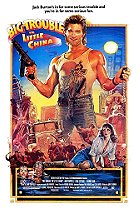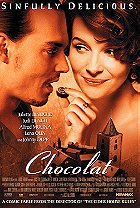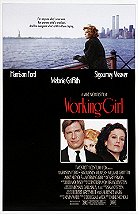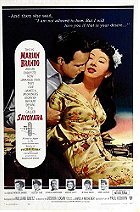You know what’s a great way to make an entertaining movie? Give a series of juicy monologues and biting one-liners to a group of highly talented actors and point a camera at them. No fuss, just the joy of watching the greats knock out a few rounds with well-written material and play off of each other. Behold then Glengarry Glen Ross.
Yes, it doesn’t exactly open up the play much as it keeps its scope limited to a few interiors, but mainly the claustrophobic office that reverberates with pessimistic foreboding. But here’s the thing, director James Foley hired a great editor, Howard E. Smith, to make the rhythms of David Mamet’s dialog work in perfect sync with the cuts, close-ups, and various stylistic choices. Foley knows he doesn’t need to embellish much, he just needs to find the palpitations of the material and ride the wave to the climax of each scene.
Foley also assembled a group of actors that would make any director envious. Alec Baldwin rips into a memorable opening cameo that’s basically a warning shot of the brutish dialog and overheated toxic masculinity to come (“Coffee is for closers”). Then there’s Alan Arkin, Ed Harris, Kevin Spacey, and Jonathan Pryce delivering reliably solid turns. Each of them bring a unique texture and color to the material with their distinct performing styles and personalities. But the two greatest performances belong to Al Pacino and Jack Lemmon.
Al Pacino got the sole Oscar nomination for the group, not undeservedly but more than likely having more to do with Scent of a Woman being released the same year, but it’s Jack Lemmon that lasts the longest in the mind. Hell, the best extended scene of consummate acting is a two-hander where they try to pull one over on Pryce. They develop a lived-in back-and-forth that is engaging to watch as they pick up subtle cues from each and deliver non-verbal tics like a quarterback giving away play ideas to his teammates. It’s a duet for the ages between two titans.
Lemmon already blessed us with a wide-range of memorable performances in classics like Some Like It Hot, The Apartment, The Odd Couple, and The China Syndrome. But he tops all of them here. He seems like he might breakdown in desperation and neurosis at any second, but he just keeps moving forward. His anxiety is palpable as he twists and turns to try and get one over on his colleagues. Survivalist instincts is pumping throughout his veins at all times, and a scene where he hopelessly tries to convince a man to buy real estate is a knockout of his persistence meetings an immovable object. It’s a late career masterpiece from one of America’s finest actors, one that makes us think we may have taken his mastery of the craft for granted during his lifetime.
This thread of anxiety and desperate is felt throughout Glengarry Glen Ross as these men work in a dead-end office chasing leads that a more pipe-dreams than anything else. They get through the day by hurling insults at each other with such imaginative and promiscuous vocabulary that it also takes on the form of musical theater. It’s an amazing feat and a credit to the synthesis of writer, director, material, and actors that we end up caring about any of these despicable characters. Even the pessimistic ending here would make the downers in other films blush for just how sour a note we leave on, but there’s no other imaginable way for the story to end. No with the world of trapped animals clawing at each other for survival that we’ve just spent two hours with.
 Login
Login
 Home
Home 95 Lists
95 Lists 1531 Reviews
1531 Reviews Collections
Collections
 0 comments,
0 comments, 







